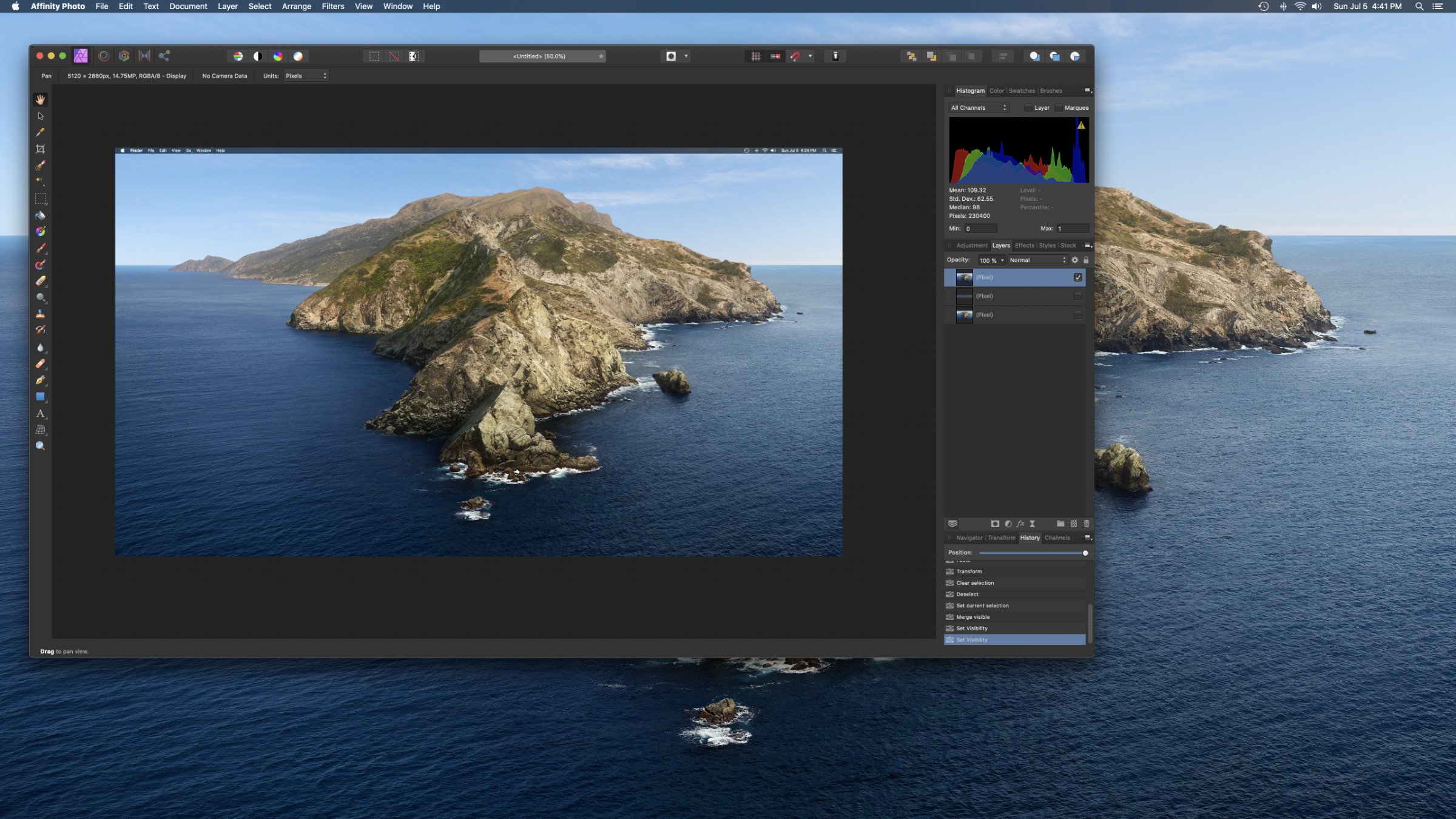

- #How to use affinity photo how to
- #How to use affinity photo manual
- #How to use affinity photo software
- #How to use affinity photo download
This is why we only see the very bright parts of the image on our screens.

65536 levels per color for the TIFF file). The range of shades that a computer screen can display (the dynamic) is much smaller than that of the TIFF file (256 levels per color for the screen vs.
#How to use affinity photo how to
How to better understand the role of tone stretching To show the whole nebula, it is necessary to “stretch” the dark tone part of the histogram of the image. What we can see at this point is basically the heart of the nebula and the brightest stars. Affinity Photo image processing: p rocessing steps Step 1: Tone stretchingĪt first glance, the TIFF file may confuse you (see figure 2): the image appears almost completely dark. merge all the processing stages) and then proceed. If at any stage of processing, your computer becomes too slow, you can “flatten” the result (i.e. This method offers more flexibility but also requires a more powerful computer configuration. The original image remains available without being directly altered. At any point in the process, it is possible to easily go back to previous settings, adjust them and get the result in real-time while preserving the rest of your work. Most of the actions described in this tutorial are non-destructive. It is important to understand that this article is not about strictly following the step-by-step tutorial, but rather understanding the notions related to image processing and being able to apply the concepts to other cases.Īffinity Photo image processing tutorial: Non-destructive processing
#How to use affinity photo manual
The advantage of manual processing over Stellina’s or Vespera’s automatic processing is precisely to allow for the treatment of objects differently depending on their features. Celestial objects can show very different characteristics, even within their category. Note that the settings required to process a particular celestial object may significantly differ depending on whether they are nebulae, galaxies, or star clusters.
#How to use affinity photo software
The vast array of software available on the market and their various functionalities offer many ways to achieve a result. There is no unique way to process an astronomical image. About the technique used in this tutorial You may want to read the 14 tips for optimizing the performance of your observation station.

The better the image captured, the better the final result of the process. To do so, you need to make a TIFF export of the images you capture ( read this article to learn more). You can of course apply this tutorial to your own images. This image was captured with Vespera using our CovalENS mosaic mode, with the integration of 900 exposures of 10s (2h30 in total).
#How to use affinity photo download
You can download the original TIFF file (as you would retrieve it during your observation) by clicking here. This tutorial is based on an image of the famous Orion Nebula (M42). Affinity Photo image processing: h ow to process Stellina and Vespera raw images with Affinity Photo | the example file 2) shows the main elements of the Affinity Photo interface that we will use.įig. For those of you using Photoshop, most of the features are similar to what you’ll see below. The screenshots differ mainly in the new design of the icons. While this tutorial is made with Affinity Photo version 2, all the actions presented can also be performed with version 1. The price is about 50€/$50 for a one-time purchase. An iPad version is also available.Īffinity photo is packed with features dedicated to astronomical photos, such as native support for FITS images and stacking with the use of calibration images. It’s available for Windows and macOS systems. It can export and read Photoshop files (.psd) but is more accessible than Photoshop because of its price, and its interface is more user-friendly. Affinity Photo image processing: how to process Stellina and Vespera raw images | introduction Requirements: Affinity Photo softwareĪffinity Photo image processing: here’s a tutorial on how to process Stellina and Vespera raw images with Affinity Photo to optimize your astrophotography skills.Īffinity Photo is a raster graphics editor similar to Photoshop.


 0 kommentar(er)
0 kommentar(er)
